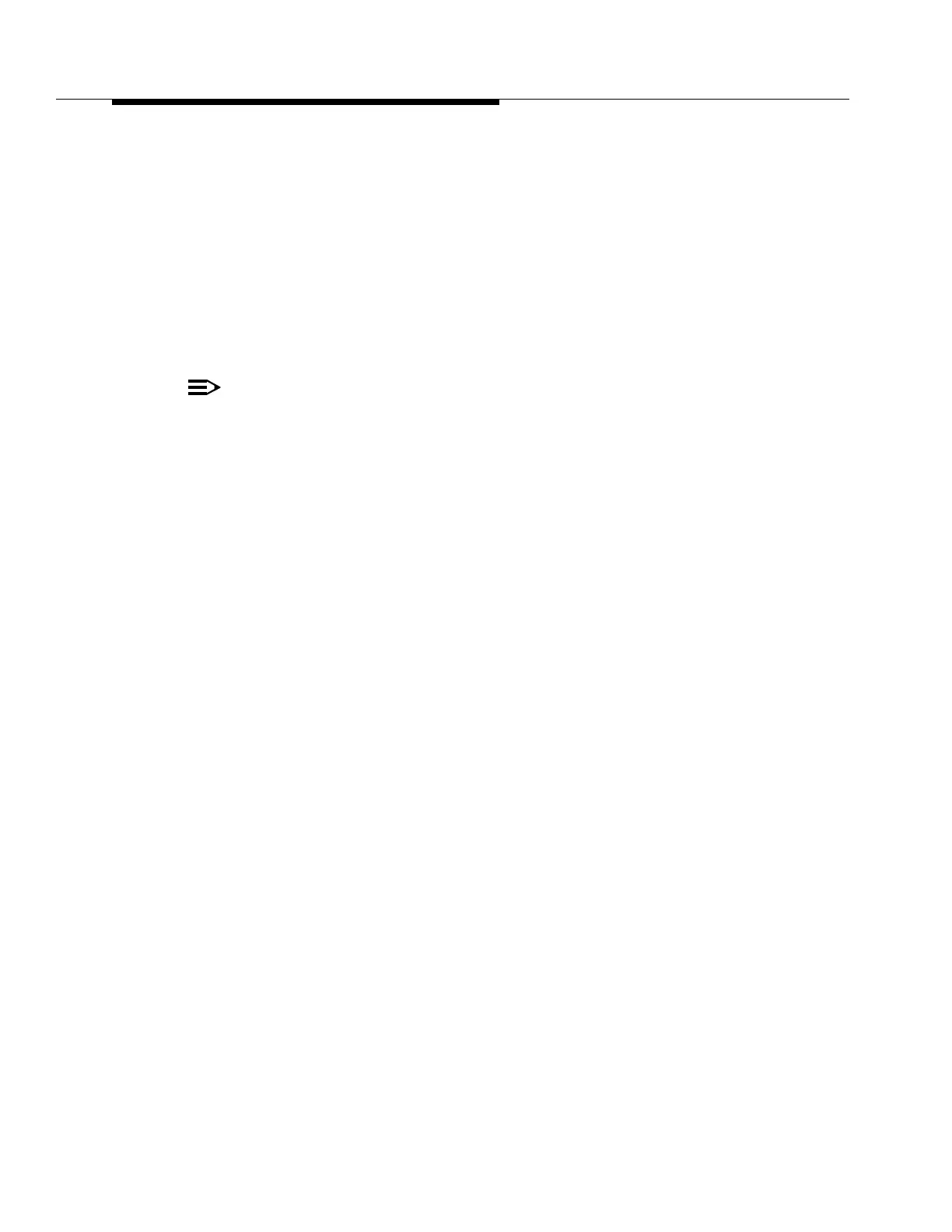363-206-295
Administration and Provisioning
8-26 Issue 1 December 1997
In Figure 8-2 (one half of a drop and continue DRI application), CO 1 and CO 2
are drop and continue nodes. Traffic continued at CO 1 used Ring 2, which is the
fiber connecting CO 1 to CO 2. Likewise, continued traffic at CO 2 used Ring 1,
which is the fiber connecting CO 2 to CO 1.
When a new service is added to the ring, use the normal procedures to add
service to all nodes of a ring except to the drop and continue nodes. Before a drop
and continue cross-connection can be made to a low-speed function unit, the slots
must be equipped with 3STS1E, 3DS3, or 21-type OLIU circuit packs. These
circuit pack types are the interface for drop and continue applications. If OLIUs are
used, the function unit slots must be provisioned for linear (1+1) applications.
NOTE:
Unless you have a specific application requiring DS3 interfaces, such as
video or DS3 clear channel, it is recommended that DRI be done with
SONET interfaces. This is because incoming asynchronous DS3 failures,
such as loss of signal (LOS) or alarm indication signals (AIS), at drop and
continue nodes will not generate SONET STS AIS if drop and continue
cross-connections are made on a 3DS3 circuit pack. As a result, path
protection switching will not occur on the OC-12 ring resulting in unusable
signals at the terminating end. See "Gateway Between SONET and
Asynchronous Interfaces" in Section 2, "Applications," for an example of
this application.
The cross-connection command for drop and continue at CO 1 has two
parameters. They are cross-connection type (cct) and ring identification (ring).
The cct is "dc" for drop and continue. The parameter ring defines the direction of
the continued signal. At CO 1 the ring is "mb2," which means to continue the
signal on Ring 2 toward CO 2.
Similarly at CO 2, the other drop and continue node, the cross-connection
command requires the same two parameters. The cct is "dc" and the parameter
ring is "mb1," which means to continue the signal on Ring 1 toward CO 1.
